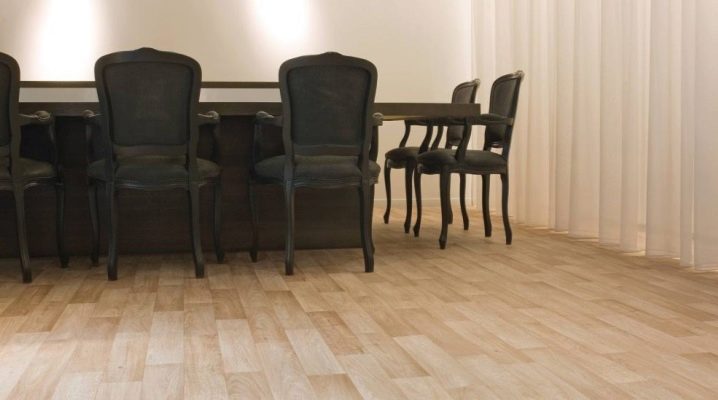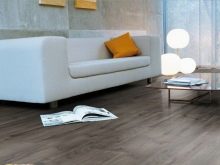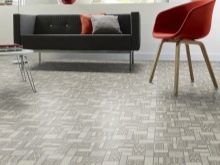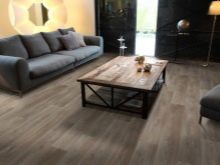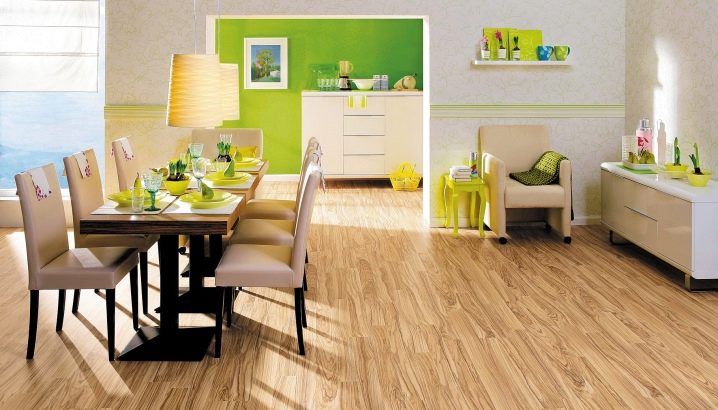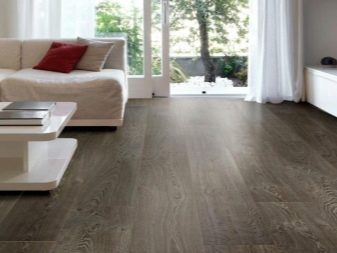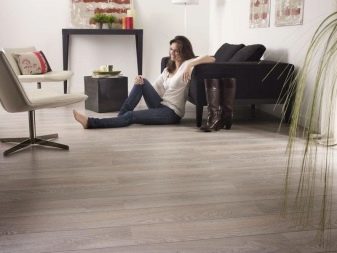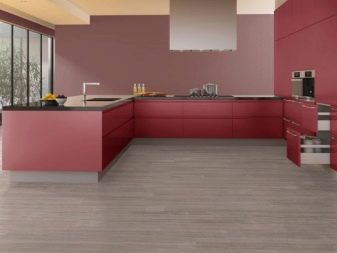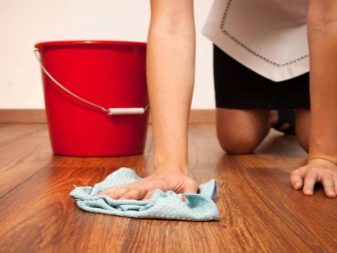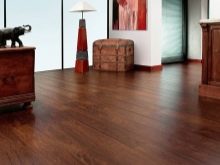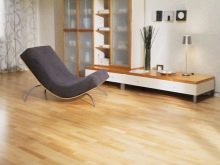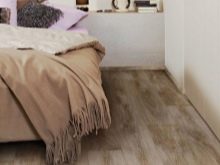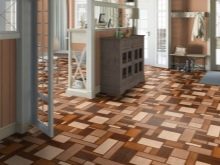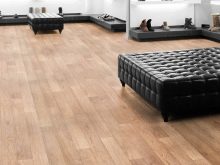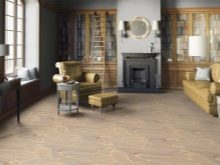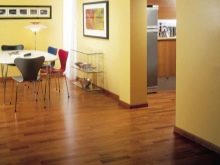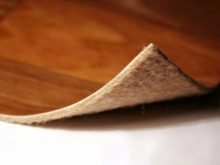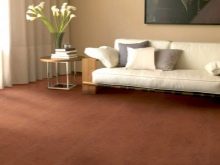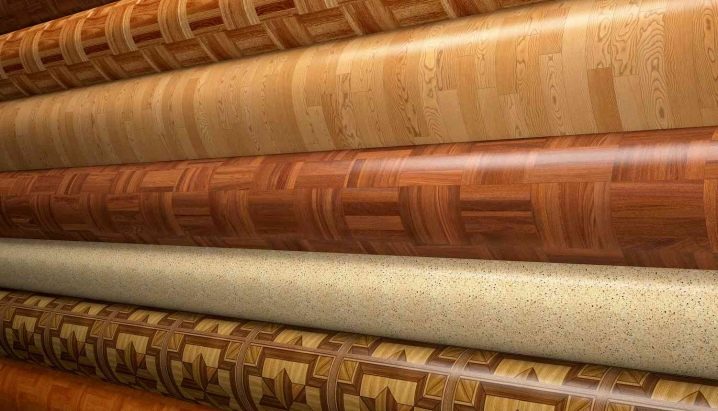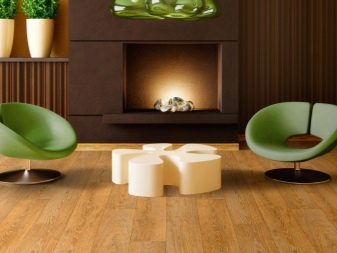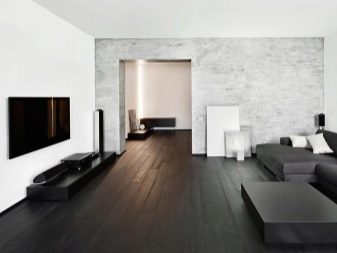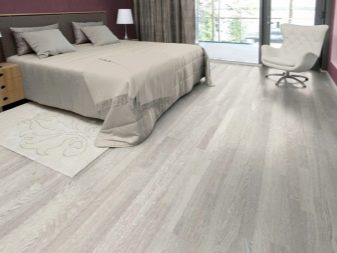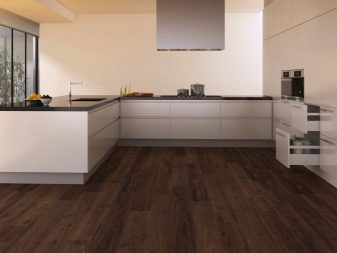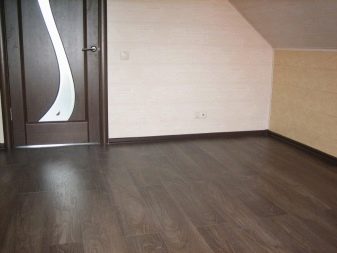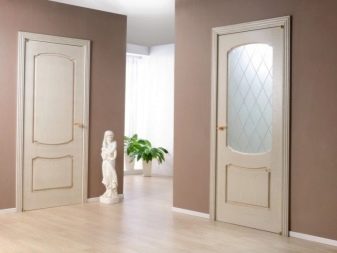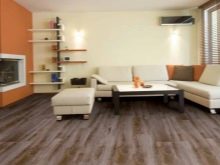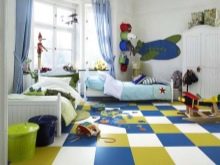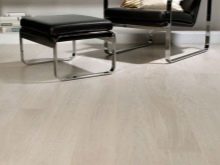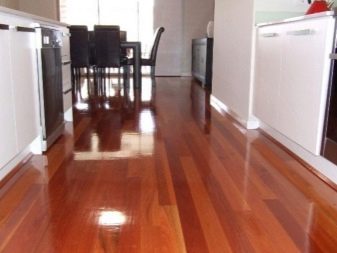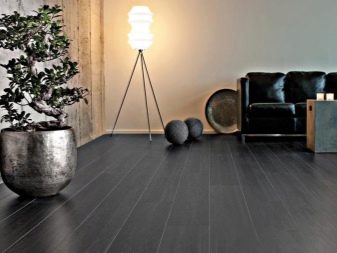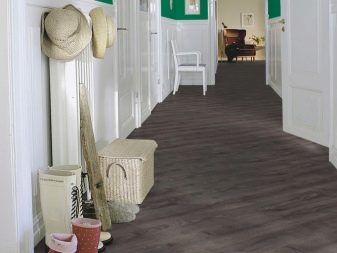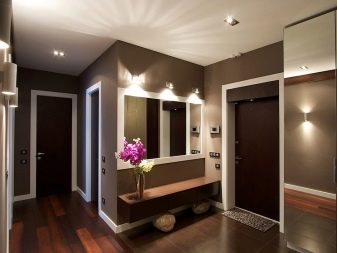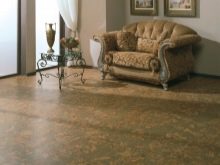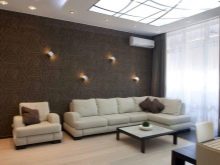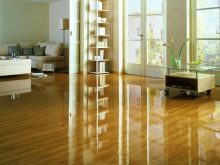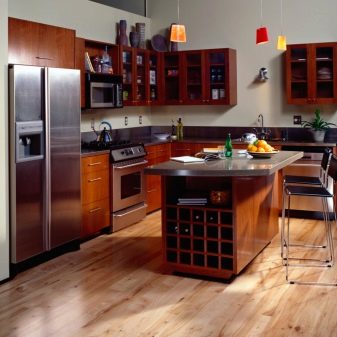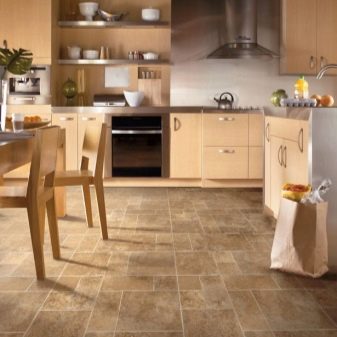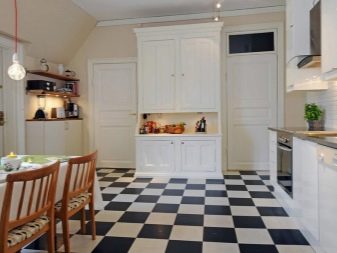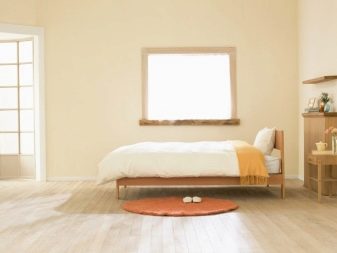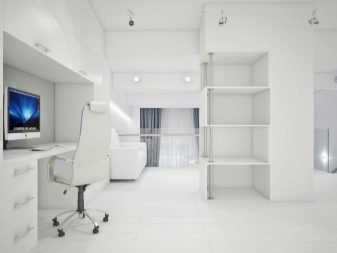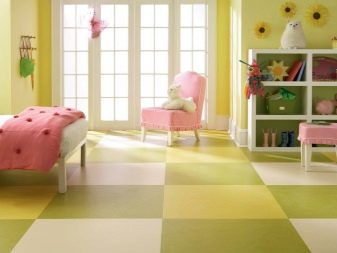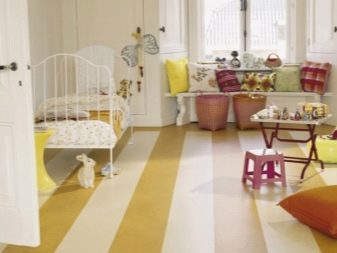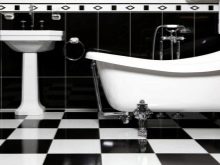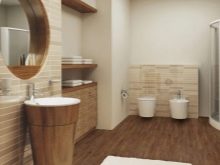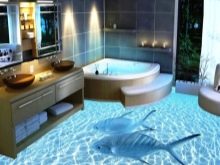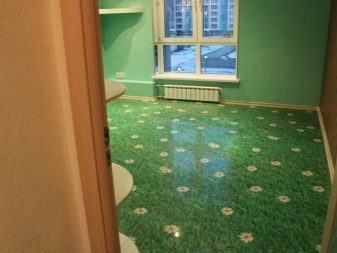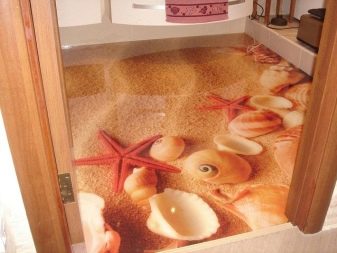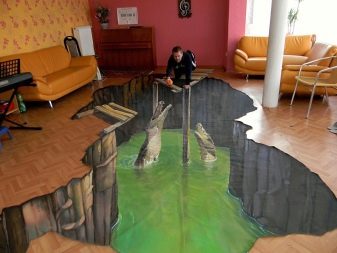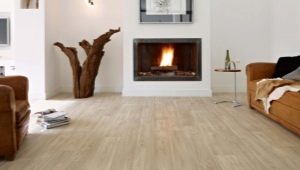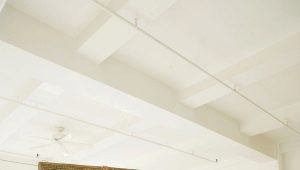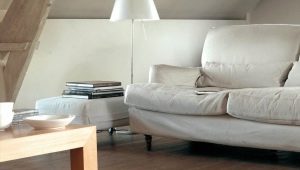Linoleum in the interior
The flooring plays a primary role in the interior of any room. Along with the decoration of the walls, the choice of furniture and the design of window openings, the completed look of the interior, its integrity and harmony depend on the floor covering. In addition, the flooring also plays a major functional role, because the floor is exposed to mechanical impact and pollution more than anything else. Therefore, the choice of flooring is extremely important in thinking through the interior, whether it be a living room, office or a hall of a public space.
Linoleum is one of the most inexpensive and practical options. among the variety and wealth of choice of building flooring materials. It has not gone out of fashion for many decades in a row, and with the development of modern production technologies, this type of coating has increased its quality by several times, and has become able to imitate any of the existing materials.
Advantages and disadvantages
Like any product, linoleum has a number of pros and cons, which it is desirable to know in advance in order not to be mistaken in the choice. This is important because the floor is covered for several years ahead, and its operation will be constant and intensive.
Let's start with the advantages, as linoleum is superior to many finishing materials with its qualities:
- The undoubted advantages of this coating include its democratic price and ease of installation. Compared with more expensive options for tile or laminate, linoleum compares favorably with the price range, it is easy to transport, and laying does not take much time. In some cases, it is enough just to unfold the roll on the floor space, like a carpet and fix.
- High heat and sound insulation properties of linoleum will allow to warm the floor, covering the surface with a solid canvas that does not allow drafts through possible small cracks or gaps at the joints with the wall. Thermal insulation is especially needed for apartments located above the basement or arch of the house, ground floors, as well as country houses.
- Another important advantage of linoleum is its practicality in everyday life.Linoleum is resistant to moisture and cleaning with chemical detergents. The solid coating prevents water from entering the joints, wetting the substrate and the floor, which provides protection against the occurrence of mold, mildew and rotting processes.
- As a rule, a modern type of linoleum undergoes fire-prevention and sanitary-technical expertise; one can always get acquainted with these parameters from the manufacturer, asking to show quality certificates for the goods.
The disadvantages include such factors as:
- brittleness at low temperatures. When transporting the material in the frosty time, special care must be taken; it must be allowed to warm up when folded into a roll before being laid on the floor;
- specific smell of new material in some types of linoleum. Discomfort is eliminated by airing. After laying the linoleum, it is advisable to withstand a room for one or two days so that the smell completely disappears;
- formation of dents from heavy objects. Linoleum is in itself a soft material, and with a substrate the probability of its pushing under the corners of bulky furniture increases.
Species
Linoleum is distinguished by its thickness, protective layer and susceptibility to abrasion. According to these parameters, linoleum is divided into three main categories - household, commercial and semi-commercial:
- Household linoleum - the most inexpensive option. It is rather thin, but it does not affect the quality of the floor covering of domestic premises, where the floor load is not so significant.
- Commercial (or industrial) type of linoleum is used most often in halls that involve a large crowd of people, offices, corridors of institutions, shops. The material is the most dense, withstand maximum loads, resistant to abrasion and weight of objects. However, its price is significantly higher, so this type of linoleum is not advisable in a regular apartment.
- Semi-commercial linoleum - Something average between household and commercial material. This option is successfully justified in the living room at home, where often populous companies gather or in the reception office of the authorities.
The composition of the material
The composition of the materials used linoleum also has significant differences:
- Thus, household linoleum is most often made of fiberglass, which is then covered with a dense protective film.
- Polyvinyl chloride in the composition of linoleum is used, as a rule, in several layers and provides increased strength of the material. This linoleum does not require perfectly flat surfaces for laying.
- Linoleum based on foamed materials is quite dense and flexible, it is an excellent heat and sound insulator. Due to the thick protective film, it does not leave dents from heavy objects.
Documentation with a peculiarity of its composition is necessarily attached to each type of material. Various compositions that provide additional strength, layers of material for warming and rigidity, coatings to reduce slip, brightness of paints, antibacterial and antistatic substances can be added to the above indicated.
Design
In modern conditions of production of flooring, the choice of design of linoleum can be quite difficult. Therefore, before embarking on an exciting journey through the colors and decor, it is necessary to determine your own view on the interior design, to identify priorities. After all, no matter how beautiful the pattern and color of the floor covering, it should be in harmony with the atmosphere of the room, with its purpose, with walls and pieces of furniture.
How to choose by color?
Ornament, warmth and brightness of shades, surface texture - let's try to understand the main subtleties and nuances of the variety of products offered:
- light shades of flooring visually expand the space. This also applies to paintings with diagonal patterns;
- dark colors give respectability to spacious rooms, if they are contrasted with light walls;
- stylish looks ensemble linoleum doors. Linoleum under the door of wenge in a room with light walls will be the perfect frame for a classic style. The light colors of the flooring, which continue in the color of the doors, will also become a peculiar highlight, will give completeness to the idea of the interior, if we are talking about strict compliance with respectable styles;
- on light linoleum dark furniture stands out more clearly, and vice versa;
- rich ornament and bright colors of linoleum are good with a single, calm surface of the walls. In the case of a bright design and walls, and flooring, space risks turning into a multi-colored box. Such a design will overload the space and tire the eye;
- for the south direction, flats of linoleum are preferable for the apartments, and warm ones for the north;
- glossy smooth surface creates an atmosphere of solemnity of the ballroom, but in the bright sunlight it is best seen stains, dust particles and scratches;
- the matte finish with a rough texture is uncomplicated and able to hide minor floor defects.
How to choose?
The design of linoleum is determined by its purpose for a particular room:
- Entrance hall. For the hallway is best suited linoleum dark low-key shades with a rough texture and pattern of small ripples. Such coverage will mask the maximum room in which dirt is brought from the street or the entrance. The choice of color will be absolutely justified in the autumn-spring period, when traces of shoes remain, despite all the efforts of the hostess to keep track of cleanliness.
- Living room. The choice of the hall can be very diverse, depending on your preferences and the dimensions of the room. Brown color or any shades that imitate precious woods are perfect for elegant styles (classic, art deco, modern). No less luxurious will look and linoleum under bleached oak. This option is suitable for a spacious living room, in combination with dark or, on the contrary, bright saturated colors of furniture and curtains.
If the living room is spacious and assumes a lot of space free from furniture, then the glossy shining linoleum will give the room solemnity and elegance.
- Kitchen. Perhaps the most diverse choice of linoleum belongs to the kitchen. Here you can not take into account the severity of style, the relevance of color and structure of linoleum. The only guideline can serve as a color scheme of wall cladding and kitchen.
The combination of light and dark shades should be observed when one of the parts is dark. That is, under the light beige set in the kitchen, you can choose both light shades of linoleum and dark. But to the dark or bright walls and furniture you need a bright floor to the room did not look gloomy or oversaturated.
For the kitchen is suitable and material, stylized marble, stone, tile. A warmer atmosphere will create linoleum under a tree or straw. There are options for log saw cut or woven basket ornament.
- Bedroom. The options for the bedroom are no less diverse, it all depends on your personal perception of color and the overall style of the room.Even if the bedroom is not supposed to have any particular style, then you can follow the basic rule - the combination with the wallpaper will provide a harmonious atmosphere, will not disturb the eyes, and allow you to rest easy.
For example, cream wallpaper, with an unobtrusive coffee pattern, is perfect for linoleum under white parquet. Or pastel color wallpaper in blue, pink, light green, lilac tones.
- Children's room. In the nursery, bright colored linoleum cloths will look good. They are not too easily soiled and the perception of color will be useful for the child. This may be a light coating with colorful geometric shapes, and delicate tones, gently repeating the color of the crib or desk, and three-dimensional drawing of fairy-tale characters.
Again, you should consider the balance between the intensity of the colors of the walls and the floor, so that they do not merge and do not cause ripples in the eyes.
- Bathroom. Despite the fact that it is customary to use tiles in the bathroom, in some cases it is possible and even necessary to prefer a linoleum coating. Especially if the house has small children. Tile - slippery material,and in the bathroom from moisture and heat, it becomes even more dangerous.
Linoleum will help prevent possible trouble and will look just as good as a tile. For example, a pattern in a black and white cell will add a chess zest to the look of an ordinary bright bathroom, and a bright 3D pattern can make you forget about the flooring material.
Beautiful ideas in a modern interior
Recently, 3D coating has become increasingly popular, that is, a coating with a three-dimensional three-dimensional image and, more often, with a certain colorful plot. It can be all kinds of animals, fish, birds, the seabed, waterfalls and fields with flowers. The fantasies of authors and designers are limitless, and modern technologies allow to bring them to life.
Besides the fact that such linoleum looks amazing in the literal sense of the word, it can visually enlarge the space. For example, a three-dimensional image of an abyss or whirlpool visually expands the boundaries of a room, creating a sense of additional volume. The same impression is also made by a calmer drawing of an aquarium with goldfish.And in the bathroom you can create a completely unique atmosphere with the use of marine themes.
That is, the space in the drawing appears to be a real space of the room, visually increasing it. Drawing on 3D linoleum can also divide a room into functional zones.
More information about the features of the choice of linoleum, see the next video.
